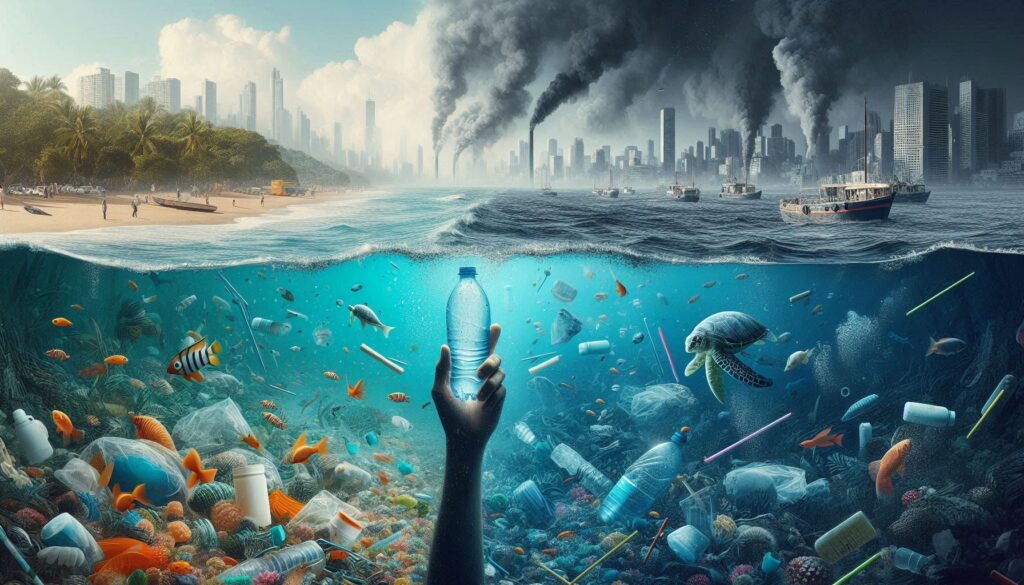The Plastic Pandemic: India’s Ticking Time Bomb
India generates 3.5 million tonnes of plastic waste annually – enough to cover Kerala’s backwaters 12 times over (CPCB 2024). With microplastics now found in 90% of Bangalore’s tap water, the shift to compostable alternatives isn’t optional – it’s survival.
Regional Spotlight: Ernakulum, Bangalore, and Mumbai
Ernakulum (Kochi)
- Challenge: Coastal pollution threatens marine life and local livelihoods.
- Solution: Implementing biodegradable waste management practices to safeguard ecosystems.
Bangalore
- Challenge: Rapid urbanization accelerates waste accumulation.
- Solution: Embracing technology-driven sustainable practices for a cleaner city.
Mumbai
Solution: Community-driven initiatives and zero-plastic campaigns to reduce urban pollution.
Challenge: High population density amplifies plastic waste problems.
The Rising Menace: Single-Use Plastics & Microplastics
Single-use plastics and microplastics have infiltrated ecosystems, food chains, and human bodies, posing irreversible harm. Over 8 million tons of plastic enter oceans yearly, while microplastics (particles <5mm) are found in 90% of bottled water and even human blood. Cities like Mumbai, Bangalore, and Ernakulum face acute challenges due to dense populations and inadequate waste management.
Key Threats Highlighted by Research
- Environmental Impact
- Marine Life Destruction: 100,000+ marine animals die annually from plastic entanglement/ingestion.
- Soil Contamination: Microplastics reduce soil fertility, threatening agriculture (critical for Kerala’s Ernakulum).
- Health Risks
- Toxic Chemical Leaching: BPA and phthalates in plastics disrupt hormones, linked to cancers and infertility.
- Air Pollution: Burning plastics releases carcinogens, worsening air quality in metros like Mumbai and Bangalore.

Sustainable Solutions: AspKom®’s Zero-Plastic Alternatives
AspKom®, a social entrepreneurship initiative, offers certified compostable, biodegradable, and plastic-free products tailored for businesses and households in Mumbai, Bangalore, and Ernakulum:
Corporate Partnerships: Customizable bulk orders for offices, hotels, and events.
Food Packaging: Plant-based cutlery, bagasse containers.
Retail Solutions: Cornstarch-based pouches, bamboo toothbrushes.
Join the Zero-Plastic Revolution!
Cities Leading the Change:
- Mumbai: Transition to compostable packaging for coastal sustainability.
- Bangalore: Reduce IT sector plastic waste with AspKom®’s corporate kits.
- Ernakulum: Protect Kerala’s backwaters with biodegradable products.
Act Now!
📧 Email: ag@eixil.com
📞 Call/WhatsApp: +91-9821181341
🌐 Explore: Custom solutions for restaurants, retailers, and households.
Switch today—every biodegradable product saves 450+ years of plastic degradation.
Local Impact: Why Focus on Mumbai, Bangalore, Ernakulum?
- Mumbai: Maharashtra’s plastic ban (2022) drives demand for compliant alternatives.
- Bangalore: Karnataka’s tech hubs seek CSR-aligned sustainability partnerships.
- Ernakulum: Kerala’s tourism industry needs eco-friendly options to protect waterways.
FAQ Section
Q: How do microplastics enter the human body?
A: Through contaminated water, food (especially seafood), and air inhalation.
Q: Are AspKom®’s products cost-effective?
A: Yes! Bulk orders cut costs by 30%, with GST benefits for sustainable businesses.
Q: Which cities do AspKom® serve?
A: Mumbai, Bangalore, Ernakulum, with pan-India delivery.
Act Now—Your Switch Starts with One Message!
📱 WhatsApp: Send Message | ✉️ Email: ag@eixil.com
